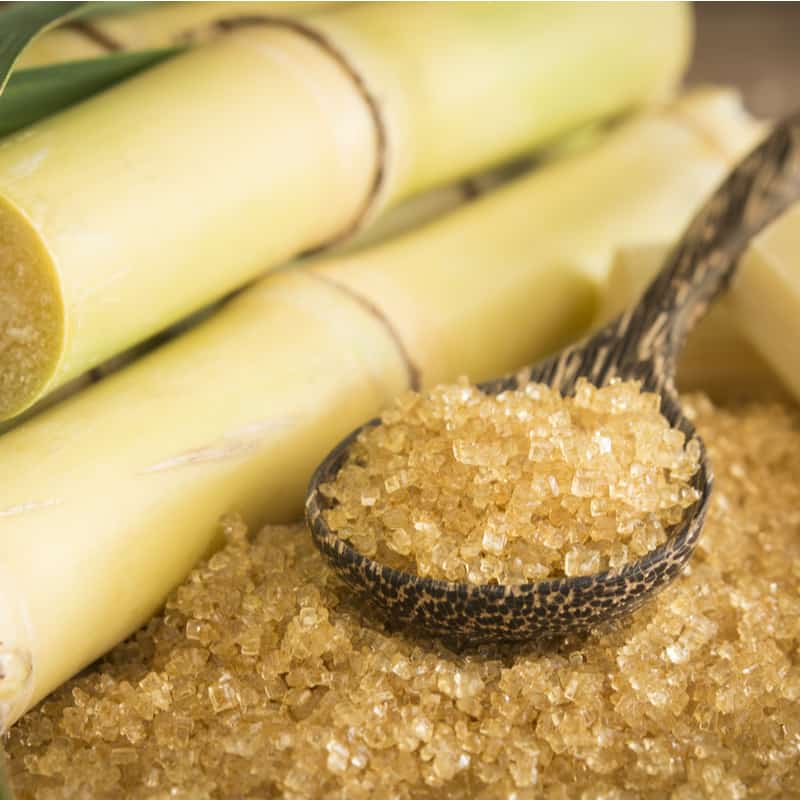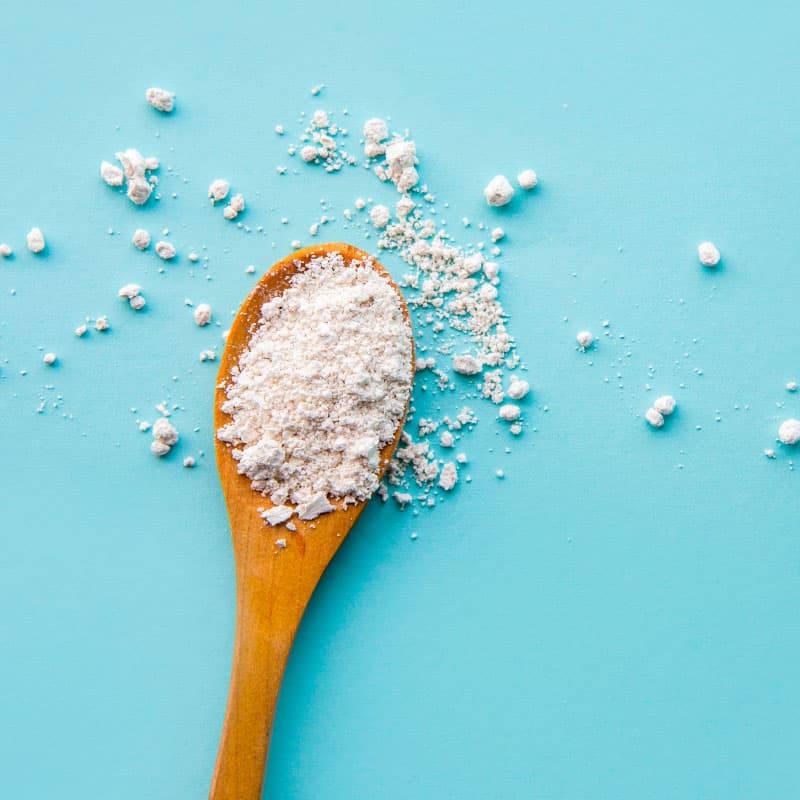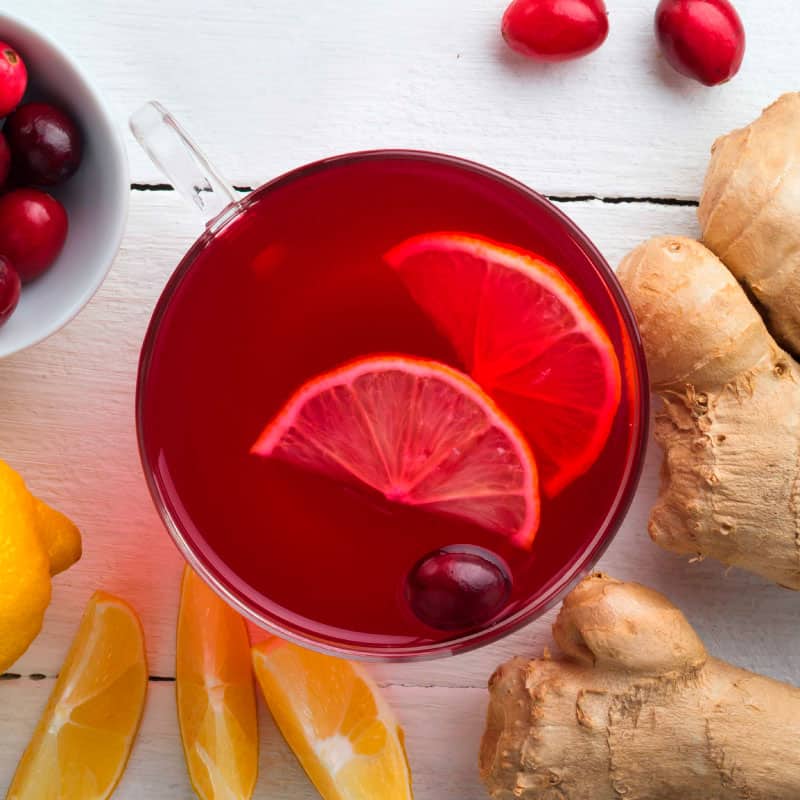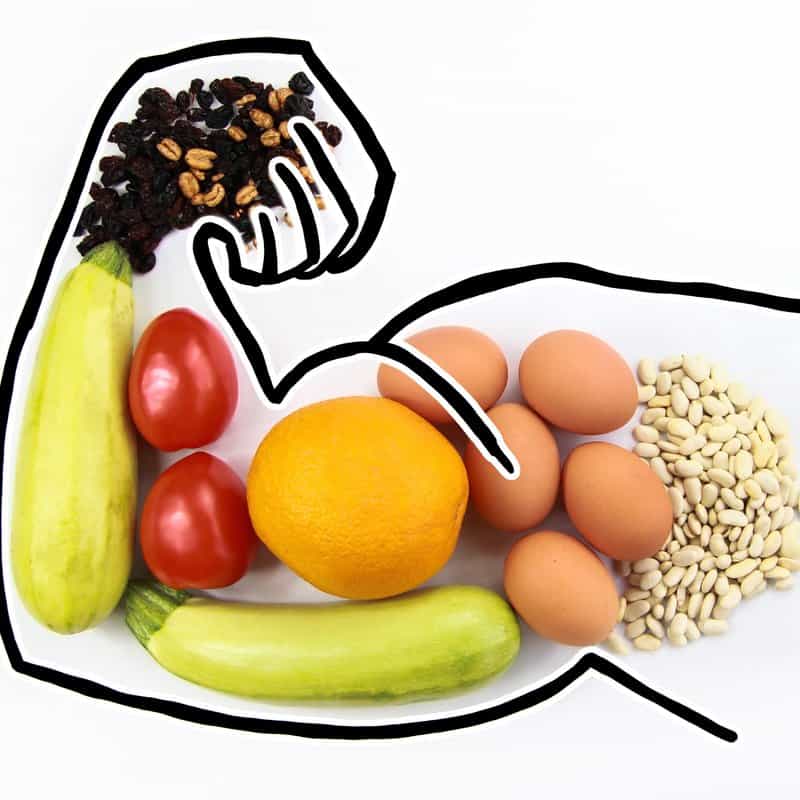This Dr. Axe content is medically reviewed or fact checked to ensure factually accurate information.
With strict editorial sourcing guidelines, we only link to academic research institutions, reputable media sites and, when research is available, medically peer-reviewed studies. Note that the numbers in parentheses (1, 2, etc.) are clickable links to these studies.
The information in our articles is NOT intended to replace a one-on-one relationship with a qualified health care professional and is not intended as medical advice.
This article is based on scientific evidence, written by experts and fact checked by our trained editorial staff. Note that the numbers in parentheses (1, 2, etc.) are clickable links to medically peer-reviewed studies.
Our team includes licensed nutritionists and dietitians, certified health education specialists, as well as certified strength and conditioning specialists, personal trainers and corrective exercise specialists. Our team aims to be not only thorough with its research, but also objective and unbiased.
The information in our articles is NOT intended to replace a one-on-one relationship with a qualified health care professional and is not intended as medical advice.
10 Antinutrients to Get Out of Your Diet … and Life
February 28, 2018
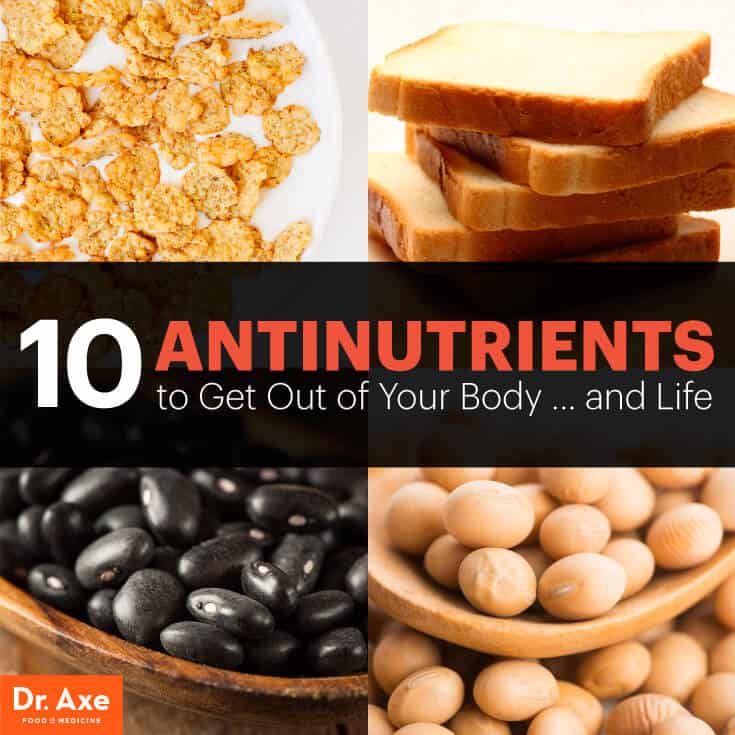
Are you confused about what antinutrients are, where they’re found and if they’re actually a real threat?
Antinutrients are natural or synthetic compounds found in a variety of foods — especially grains, beans, legumes and nuts — that interfere with the absorption of vitamins, minerals and other nutrients. They can even get in the way of the digestive enzymes, which are key for proper absorption. Antinutrients can also be found in plant roots, vegetables, leaves and fruits, although these are at much lower levels and usually have benefits as opposed to mostly harmful effects.
Many different types of “seed” foods contain antinutrients like phytic acid, leptins and saponins naturally, including some that you probably don’t even realize are seeds (for example, all grains are really the seeds of cereal grasses). The reason they contain these compounds that bind to vitamins and minerals, making them unabsorbable, is largely as a defense mechanism. Their antinutrients help repel pests, bugs and other predators so the seeds are able to live on and reproduce.
The good news? Not all antinutrients are bad, first off, and secondly, you can help lower the content of the kinds that are. (1)
Polyphenols, for example, are a type of antinutrient that can actually be beneficial (when eaten in appropriate doses), so it’s not always cut-and-dry as to the types we should avoid. This is the same case as with flavonoids, another group of antinutrients found in “healthy” sources, including tea, coffee, wine and certain other whole plant foods. Unfortunately, even positive antinutrients can inhibit mineral absorption to some degree but are relatively harmless (and even beneficial) as long as you don’t overconsume them.
Just keep in mind, in sensitive individuals and when eaten in very high concentrations, even “good antinutrients” can inhibit digestion of copper, iron, zinc and vitamin B1, along with enzymes, proteins and starches found in plant foods. It all depends on someone’s unique reaction, so it’s key that you tune in to your own reactions to different foods so you can adjust your diet accordingly.
How to Reduce Antinutrients in Your Body
When it comes to lowering the content of “bad” antinutrients that are more harmful than beneficial, here’s what you need to know: When you sprout foods that contain antinutrients, the concentration of the antinutrients usually goes way down. (2)
The same can happen when fermenting foods, which produces incredibly beneficial probiotic foods. Soaking, sprouting and fermenting are the simple and time-honored practices of germinating seeds — whether seeds from grains, nuts, beans or legumes — so that they’re easier to digest and your body can access their full nutritional profile.
Research shows that unsprouted grains have lower protein content, deficiency of certain essential amino acids, lower protein and starch availabilities, and the presence of certain antinutrients when compared to seeds that have been sprouted.
Sprouting foods that contain antinutrients (or cooking them in the case of most vegetables) increases absorption of beneficial vitamin B12, iron, phosphorus, magnesium and zinc, plus it makes the food easier on digestion; decreases risk of allergic reactions; and releases more vitamins, amino acids and fiber from within the seeds. While sprouted grains and other nutrient-blocking seeds won’t be completely free from all antinutrients after soaking and sprouting, it’s a much better option than eating them unsoaked.
10 Antinutrients to Avoid
Due to the potential for contributing to deficiencies and causing digestive distress for a high percentage of people, here are 10 antinutrients to try and eliminate from your diet as much as possible:
1. Phytic Acid (Also Called Phytate)
This is probably the most well-known antinutrient that’s found in grains and legumes and interferes with the absorption of minerals. Phytic acid can unfortunately lock up high percentages of phosphorus, calcium, copper, iron, magnesium and zinc. Some research shows that up 80 percent of phosphorous found in high-phosphorus foods like pumpkin or sunflower seeds, along with 80 percent of zinc found in high-zinc foods like cashews and chickpeas, might be blocked by phytate. The same can be said for about 40 percent of magnesium-rich foods.
At the same time, it interferes with calcium and iron absorption, which raises the risk for problems like anemia (which emanates from an iron deficiency) and bone loss. On the other hand, eating foods rich in vitamin C, like leafy green vegetables or citrus fruits, can counteract phytate and increase iron absorption. And foods rich in vitamin A like sweet potatoes or berries can also help improve iron absorption.
Another very problematic component to phytic acid is that it inhibits certain essential digestive enzymes called amylase, trypsin and pepsin. Amylase breaks down starch, while both pepsin and trypsin are needed to break down protein.
2. Gluten
Known to be one of the most difficult-to-digest plant proteins, gluten is an enzyme inhibitor that has become notorious for causing gastrointestinal distress. Not only can gluten cause digestive problems, but it can contribute to leaky gut syndrome or autoimmune disease, allergic reactions, and cognitive problems as well. Gluten sensitivity is classified as a group of symptoms related to negative reactions to the gluten protein found in all wheat, rye and barley plants.
The severe form of gluten sensitivity, a true allergy to gluten, is celiac’s disease — but gluten can also cause other less severe symptoms in a much larger percentage of people, including joint pain, headaches, fatigue and poor memory.
3. Tannins
Tannins are a type of enzyme inhibitor that prevent adequate digestion and can cause protein deficiency and gastrointestinal problems. Because we need enzymes to properly metabolize food and usher nutrients to our cells, molecules that inhibit enzymes can cause bloating, diarrhea, constipation and other GI issues.
4. Oxalates
Similar to tannins, oxalates are found in the highest quantities in sesame seeds, soybeans, and black and brown varieties of millet. The presence of these antinutrients makes plant (especially legumes) proteins of “poor quality,” according to research done on absorbability of plant amino acids. (3)
5. Lectins
Lectins are found in high quantities in beans and wheat, which as mentioned earlier reduce nutrient absorption and can cause indigestion, bloating and gas for many people.
One of the most nutritionally important features of plant lectins is their ability to survive digestion by the gastrointestinal tract, which means they can penetrate cells lining the digestive tract and cause a loss of gut epithelial cells, damage the membranes of the epithelium lining, interfere with nutrient digestion and absorption, stimulate shifts in the bacterial flora, and trigger autoimmune reactions. (4)
Lectins can cause GI upset similar to classical food poisoning and immune responses like joint pain and rashes. Improperly prepared raw grains, dairy and legumes like peanuts, and soybeans have especially high lectin levels.
However, there’s no need to cut out lectin-rich foods from your diet if you prepare them properly to reduce the lectin content of your foods. Cooking legumes can nearly eliminate all lectins. Soaking and sprouting grains and seeds can also be an effective method to reduce lectin content. Lastly, fermenting your foods can also help reduce the amount of lectin content.

6. Saponins
Similar to lectins, saponins affect the gastrointestinal lining, contributing to leaky gut syndrome and autoimmune disorders. They’re particularly resistant to digestion by humans and have the ability to enter the bloodstream and trigger immune responses.
7. Trypsin Inhibitors
Trypsin and chymotrypsin inhibitors are found in most grain-containing products, including cereals, porridge, breads and even baby foods. They seem to be degraded well by heat processing and cooking but can still cause problems like mineral deficiencies for young infants, children and anyone with reduced pancreatic function.
8. Isoflavaones
These are a type of polyphenolic antinutrient found in highest levels in soybeans that might cause hormonal changes and contribute to digestive issues. In smaller does and when beans have been properly prepared, this can also be beneficial, but it’s usually recommended to avoid soybeans because isoflavones are capable of exerting estrogen-like effects. For this reason, they’re classified as phytoestrogens and considered endocrine disruptors — plant-derived compounds with estrogenic activity that might result in harmful changes in hormone levels.
9. Solanine
Found in nightshade vegetables like eggplant, peppers and tomatoes, this is actually a beneficial antinutrient in most cases. But in high levels and in those sensitive to eating nightshades, it can cause “poisoning” and symptoms like nausea, diarrhea, vomiting, stomach cramps, burning of the throat, headaches and dizziness.
10. Chaconine
Found in corn and plants of the Solanaceae family, including potatoes, this compound is beneficial when eaten in small doses because it has antifungal properties, but in some people it’s capable of causing digestive issues, especially when uncooked and eaten in high amounts.

